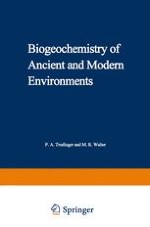This volume contains a selection of papers presented to the Fourth Internation~l Symposium on Environmental Biogeochemistry (ISEB), and a conference on Biogeochemistry in Relation to Mining Industry and Environmental Pollution (Leaching Conference), held in Canberra, Aust ralia on August 26-31 and September 3-4, 1979, respectively. The ISEB were established to provide "a forum for uninhibited exchange of information and ideas among the biological, chemical, atmospheric and geolorical scientists working in the common area of biogeochemistry, encompassing soil and other earth sciences as well as the hydrosphere and atmosphere", By linking the fourth ISEB with the Leachin~ Conference the scope of discussions was extended to encompass the application of biogeochemical processes to the mining industry. This wide-ranging philosophy is reflected in the breadth and diversity of the subjects covered in this book. The published papers are expanded versions of those presented at the meetings. They have all been scrutinized by at least one referee in addition to the editors. About 20% of the contributions to the meetings are not included, either because authors did not wish to publish or because the papers were not accepted by the editors.
